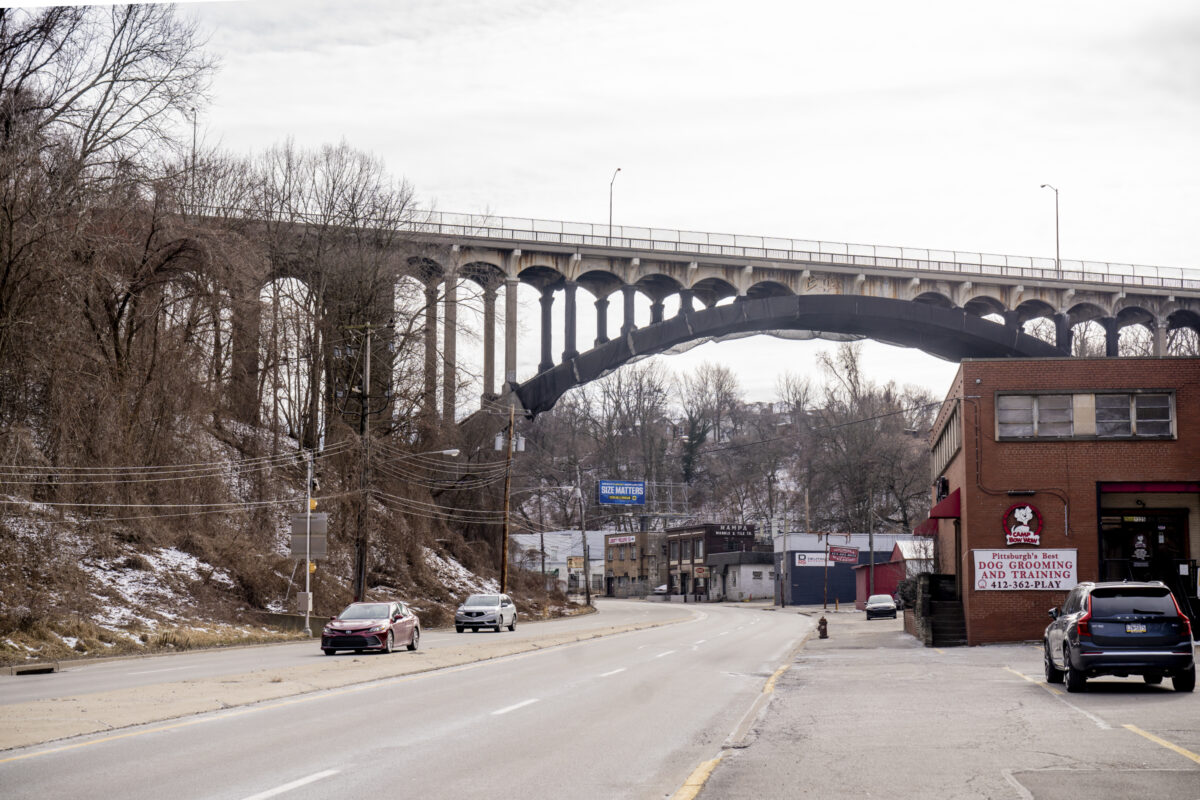It’s getting harder to cross Girty’s Run, the stream that runs through the heart of Millvale.
Officials received grim news earlier this year: Two borough-owned bridges were in such rough shape that they needed to be closed, and a third bridge required a weight restriction — effectively cutting the business district off from bus service.
Eddie Figas, who manages the small borough across the Allegheny River from Pittsburgh, told the Union Progress that local officials were “very surprised” by the bridge issues. Even though he said state officials have helped in charting a path forward, Millvale wasn’t originally scheduled to have work begin on any of its bridges for more than a decade under the state’s current construction plan.
“Based on previous inspections, we expected all bridges to remain open with limited restrictions,” Figas said. “However, we also recognize that the safety of anyone crossing the bridge is the most critical component. After a few deep breaths, our focus moved to the next steps.”
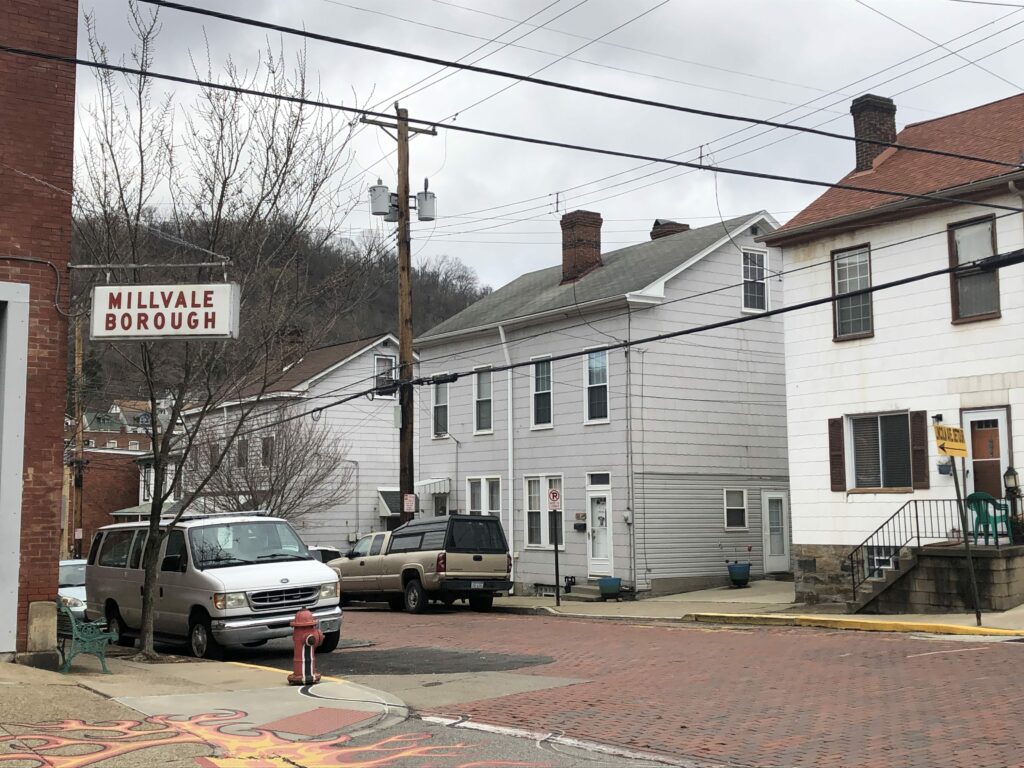
President Joe Biden’s Infrastructure Investment and Jobs Act, signed into law in fall 2021, has started to provide billions of dollars to repair roads, bridges and more. But transportation planners appear to be falling into familiar habits, with aging bridges owned by cities, boroughs and townships left with a relatively small amount of repair money.
More than 80% of southwestern Pennsylvania’s billions in federal bridge funding over the next 12 years will go to crossings owned by the state Department of Transportation, according to a Union Progress analysis of the state’s current construction plan, even though municipalities are more reliant on federal dollars and a much larger share of their bridges are in rough shape.
The state has lined up federally funded work on nearly 40% of its bridges that are longer than 20 feet and rated in “poor” condition, but only 19% of similarly rated bridges owned by municipalities have work scheduled. Pennsylvania will also perform work on about two dozen of its bridges that are between 8 and 20 feet and in poor condition, but no money is set aside for work on comparable bridges owned by municipalities.
PennDOT also appears to be benefiting significantly from some of the most generous federal outlays. The hundreds of millions in funding available through the Bridge Formula Program could be particularly lucrative to cash-strapped municipalities, since it can be used to fully cover a project’s cost, but state bridges are set to receive nearly 90% of that cash over the next 12 years.
The funding tilt toward PennDOT arrives after the state just spent several years massively improving its bridges while municipalities saw much fewer resources sent their way. Most of the new federal money isn’t frozen yet for specific projects and could potentially be shifted around. Work started earlier this year on the next revision to the state’s construction plan.
Larry Shifflet, PennDOT’s deputy secretary for planning, told the Union Progress that he thinks the funding process is “more than fair” and “more collaborative than any other state in the country.” The state has moved toward what he described a “lowest-lifecycle-cost approach,” as opposed to fixing the “worst first.”
“Sort of getting somewhat away from focusing so much on poor condition rather than, ‘What can we do to extend the life of the bridge?’” he said. “[We’re] trying to get in there and do the right treatment at the right time, which means we are getting the best return on investment for the commonwealth and for the taxpayers.”
Shifflet added that infrastructure money in Pennsylvania is divided according to a series of formulas, which are updated every two years and created with input from local planning organizations across the state.
“We reach, well, in my career, it’s always been full consensus,” he said, adding that three meetings have already taken place this year to discuss potential formula revisions.
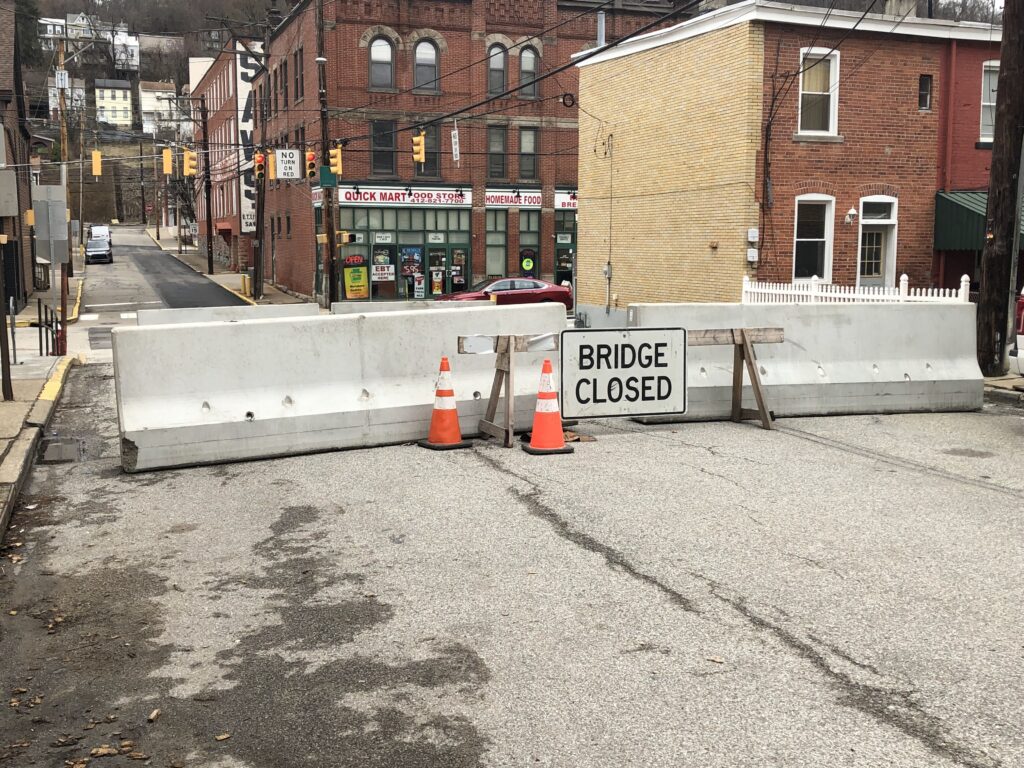
The state’s infrastructure has seen a massive overhaul since 2013, when the Legislature passed a law called Act 89. Hundreds of millions of dollars spent on repairs caused the share of state-owned bridges rated in “poor” condition, the worst ranking, to drop by more by two-thirds, from 27% in 2012 to 9% in 2022.
“Poor” bridges owned by municipalities haven’t fared as well. About 30% of bridges owned by local cities, boroughs and townships are in rough shape, essentially the same as a decade ago.
David Sanko, who leads the state Association of Township Supervisors, told the Union Progress that the funding split is unacceptable, adding, “I don’t know any dictionary where you would look up ‘full partnership’ where that would meet the definition.”
Sanko said it might be appropriate for the Legislature to step in and redirect some of the federal infrastructure dollars, a strategy to make “PennDOT see that the transportation system in Pennsylvania is bigger than just PennDOT.”
“For years, it has been an acceptable policy to say, ‘Just give them a little bit so they don’t yell too loud, that’ll be enough,’” said Sanko, who met last week with other local government associations and Lt. Gov. Austin Davis to discuss transportation issues.
Two developments potentially offered the opportunity for leaders to adjust how transportation needs are funded.
Biden’s bill guaranteed billions of dollars in new funding, and a memo from the federal agency overseeing bridge programs urged local leaders to “maximize the benefits.” It said states should take care to ensure dollars go to “localities that historically have lacked resources for such projects.”
Then came the 2022 collapse of Pittsburgh’s Fern Hollow Bridge. The span’s demise — it was one of many locally owned crossings rated in poor condition for years, set to wait years more for major repairs — made clear the need to invest in locally owned infrastructure.
Top leaders, including from the Southwestern Pennsylvania Commission, pledged to look into reforming the funding process to try and prevent a similar collapse from happening. The commission is the central hub for regional transportation planning and fills the four-year Transportation Improvement Program with projects in Allegheny, Armstrong, Beaver, Butler, Fayette, Greene, Indiana, Lawrence, Washington and Westmoreland counties.
SPC spokesperson Shannon O’Connell told the Union Progress that the agency has had ongoing discussions about how to improve the funding process, including outreach to local government officials through two bridge funding workshops held last year. She added that the region's current four-year TIP is more weighted toward local bridges than the state's full 12-year plan.
“These workshops provided local bridge information such as bridge inspections, bridge asset management, TIP process, funding mechanisms and project delivery,” she said, noting discussions will continue as the process to build the next four-year TIP begins later this year.
O'Connell added that projects are organized by “needed costs and schedule priority,” not which level of government will benefit, and there are various funding sources that local governments can string together to pay for bridge projects.
“New projects are evaluated for their ability to improve federal performance measures and the ability to satisfy relevant funding program requirements,” she said.
Shifflet, of PennDOT, said it can be tough to balance priorities against funds available to perform repair work.
“It all has to fit within that financial envelope,” he said. “But certainly there’s always room to look to prioritize potentially a little bit differently, as we move forward.”
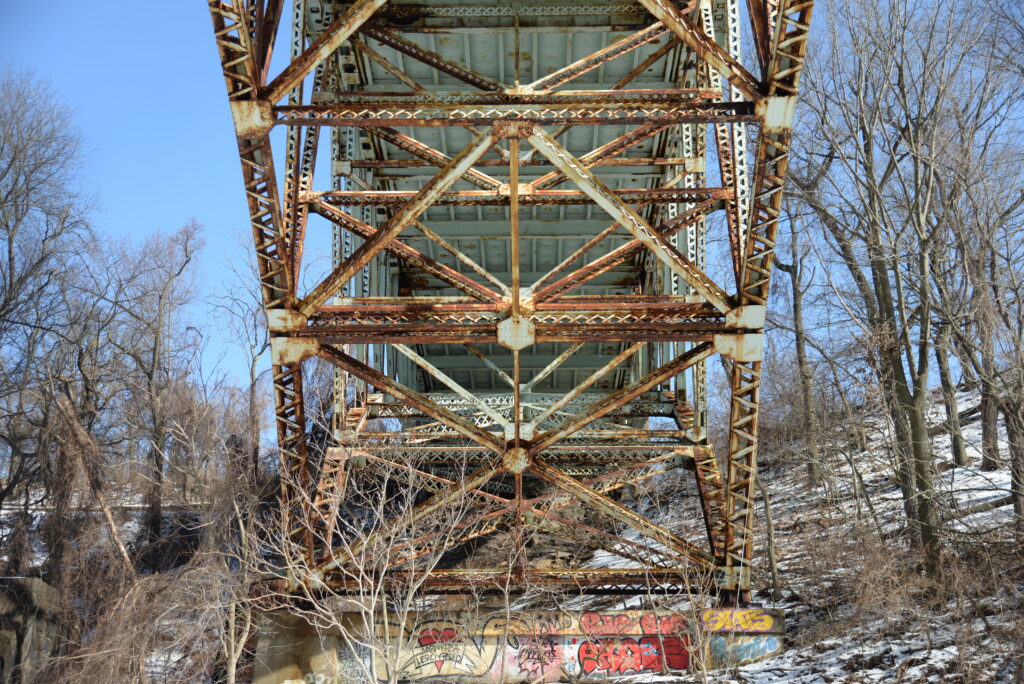
Lawmakers said it is crucial to use federal dollars to modernize bridges of all owners across the state.
State Rep. Kerry Benninghoff, the top Republican on the House Transportation Committee, told the Union Progress that the federal money can “really bring Pennsylvania’s infrastructure farther into the 21st century.”
“Those of us who live in rural Pennsylvania, we have a lot of bridges that basically get weight limited,” he said. “All of a sudden, now the farmer and or the trucking company who hauls the guy’s milk, he’s got to go 5, 10 miles out of his way to get to a farm because the small bridge, the township bridge that normally got him there, has now been weight limited.”
Benninghoff added that he would like to look into reforming some of the complex construction procedures currently on the books, noting the new Fern Hollow Bridge was built on an expedited schedule.
“I’m kind of excited, I think there’s a lot of great opportunities to be smarter, be more efficient,” he said, “and obviously having this influx of money coming in helps that process move along a little more easily.”
State Sen. Jim Brewster, a McKeesport Democrat who sits on the Senate Transportation Committee, told the Union Progress that he would have liked to see more funds allocated to local bridges. But he said motorists also rely heavily on state bridges, and improvements to them are a welcome sight.
Brewster added that he’s reintroduced a bill that would create a database of bridges, including their condition and potential repair plans, and require it to be audited every four years to make sure officials aren’t leaving any bridges behind.
“Lack of attention is our enemy,” he said. “And I think that lack of attention does not exist at this point, in my opinion.”
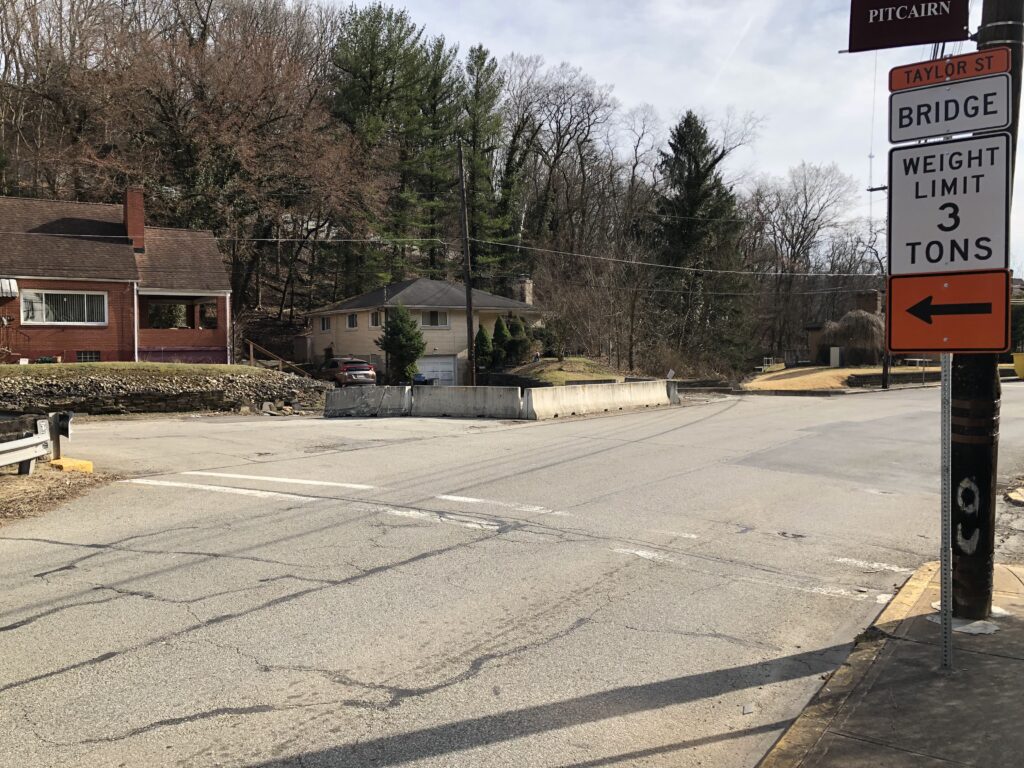
Places like Pitcairn, a borough of 3,000 people just east of Pittsburgh, are left to play the waiting game. The Taylor Avenue Bridge has the distinction of being both in poor condition and also the sole span in Allegheny County classified by inspectors as “Scour Critical A.” Flooding from Dirty Camp Run could compromise the bridge’s supports, and it must be inspected during severe weather.
Jim Comunale, the borough’s public works supervisor, told the Union Progress that part of the delay in fixing the bridge is due to uncertainty about whether a long-debated flood-control project will proceed. But he said the larger issue is securing money to complete work on the many crossings needing attention.
“What borough has millions of dollars to fix these bridges?” he asked aloud. “I don’t think any of them do. I know we don’t here.”
The bridge, which last had major repairs in 1950, has been rated in poor condition for more than 30 years and now has concrete barriers blocking off its worst sections. It won’t see its next big overhaul until the 2030s under the state’s current construction plan.
“If you look at the amount of traffic, I can see how they could allocate more to the state bridges — I understand that,” Comunale said. “But that doesn’t mean that they have to leave us alone.”
Jon, a copy editor and reporter at the Pittsburgh Post-Gazette, is currently on strike and working as a co-editor of the Pittsburgh Union Progress. Reach him at jmoss@unionprogress.com.

